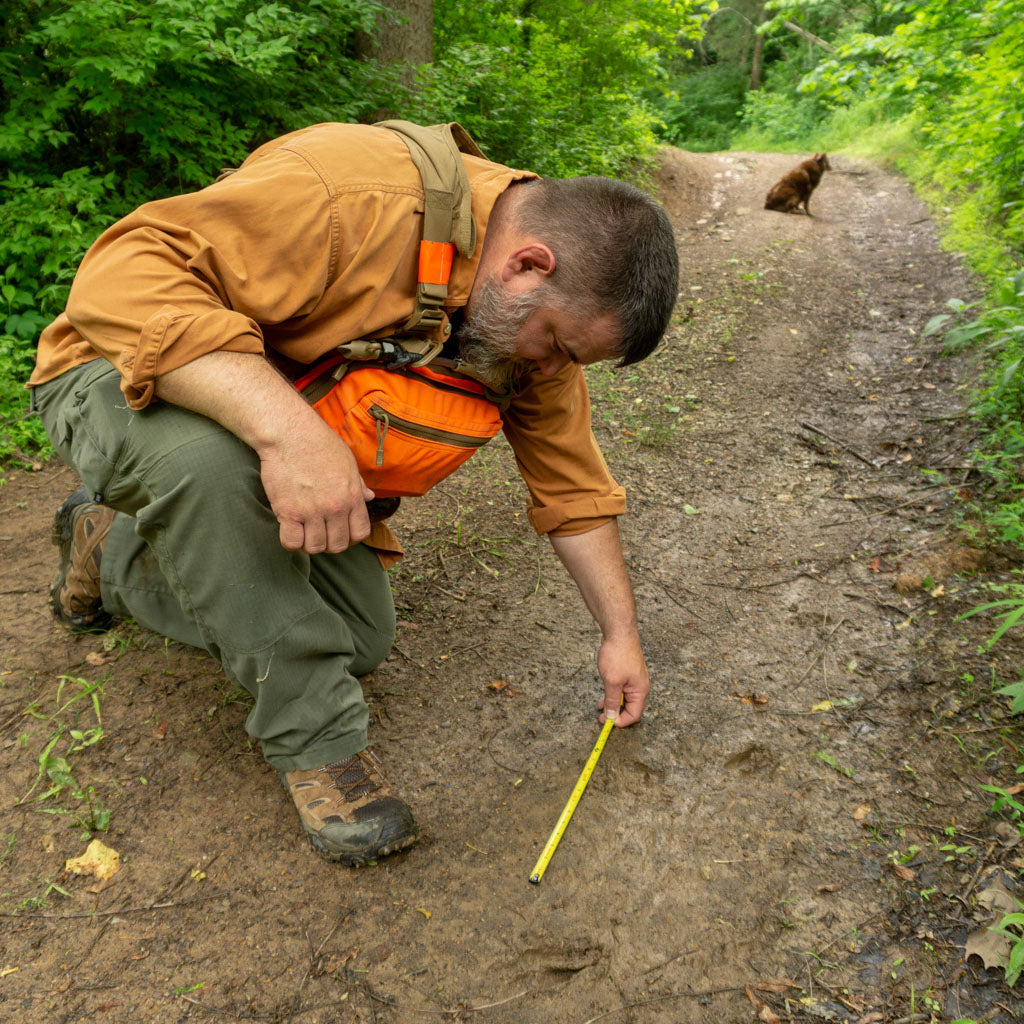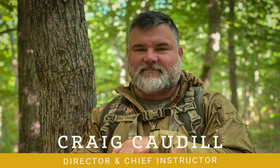
Four simple methods to help a beginning tracker
Would you like to see more that is going on around you? Would you like the ability to go out and read the earth? The ability to track is not necessarily a gift that someone is born with, but rather a skill that takes heaping amounts of dirt time to be able to do well. The beauty of it is that tracking skills can be utilized to track game you are hunting, to assist you in setting traps, or to track yourself or another person into or out of an area for search and rescue purposes. We wanted to give you a few helpful hints to help you start seeing more on your next trip outside.
Change Your Point of View – A Lot
Seeing more tracks is about a lot of things, that is for certain. Two of the big ones are the role that shadow and light play on a track. To see more tracks, make sure you are looking for them as you walk, and taking time to change your elevation from time to time. This will allow you to see more tracks. You can do this on top of a known track to get more detail or when you look out in front of you to find the next one. Changing your elevation will help give you a different perspective and offer the view you need, to see the track you are missing.
Cutting for Sign, Looking for Track Traps
I am a statistics sort of guy by trade and I like to employ those skills when it comes to tracking. What I mean is I like to go to areas in which I have a higher probability of seeing tracks and starting there. If I have been elsewhere and I lose tracks, I will often go to one of these areas to look for them. Some areas of higher probability are watering and feeding areas. All animals, including humans, need water and food. I also like to employ natural track traps to study what might be in an area that I find myself in. A track trap is simply a location in which it is easy to see many tracks in one spot. For those of us in forested areas that contain lots of leaf litter, that means going to the edges of water, or puddles in trails or roadways. Basically, any area that has the softer strata which will register tracks more easily.
Limit Your Vision Occasionally
It certainly sounds counter-intuitive; however, this is a tactic that I use regularly. When I am viewing an area to locate sign, I will cup around my eyes to both alleviate my eyes from the sun and to focus my vision and attention on smaller areas. In this manner, I do not have to take in as much information from the area and process it at one time. This allows my brain to catch up with what my eyes are transferring to it.
Use Some Tools
There are three tools that I like to carry that help me as a tracker. As trackers, we know that we should always do what we can to place a track between us and the sun to get optimal shadows cast across it, this allows us to see more of it. However, tracks do not always cooperate with that setup. A good tactical flashlight, which has many other uses, is a good tool for a tracker to simulate the light needed to get this detail. A monocular is a tool that can also be used to limit your peripheral vision while at the same time extending it forward. In this instance use your mono or binos to get more detail out in front of you. This gives you the added benefit of seeing detail without contaminating the track line and further hindering your pursuit.
Finally, I would suggest a GPS as a pre-emptive measure for practice. By regularly utilizing a GPS you can mark waypoints for known tracks. This will will help you see patterns of travel in an area that you frequent. Again, this is a practice that should be done before you need it. Once we start seeing these patterns regularly, we can then start to find them without the GPS.
There you have it. Four simple methods to help you see more on your next trip outside. From our perspective tracking is the root of all things outdoors. It is situational awareness at its finest. It is humbling and a great learning experience. Always have the mind of a student and you will do well as a tracker.
 Craig Caudill is the Founder and Chief Instructor of Nature Reliance School. He specializes in teaching outdoor related topics to include, survival, tracking go-bags, nature awareness and gun safety for private and public groups, and government agencies. Craig’s first book, Extreme Wilderness Survival from Page Street Publishing, distributed by Macmillan Publishing will be available in March 2017.
Craig Caudill is the Founder and Chief Instructor of Nature Reliance School. He specializes in teaching outdoor related topics to include, survival, tracking go-bags, nature awareness and gun safety for private and public groups, and government agencies. Craig’s first book, Extreme Wilderness Survival from Page Street Publishing, distributed by Macmillan Publishing will be available in March 2017.
Craig is a also frequent contributor to TV outlets, blog sites, magazines and is a popular online outdoor educator on his YouTube channel. Pick up the book, subscribe to him on youtube, or join Craig in a class so he can help you be more safe and aware in the outdoors.


Leave a comment